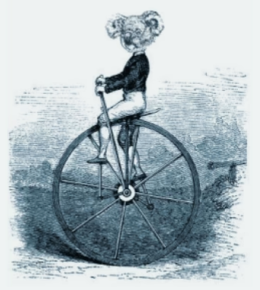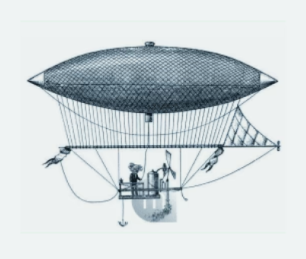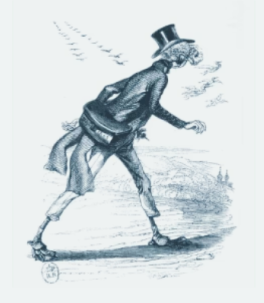The choice of baby slippers and shoes is crucial for their comfort and the proper development of their feet.
Improper shoes can lead to posture and growth problems.
This article guides you through the essential criteria for choosing the best baby slippers and shoes. We also present the different types of shoes adapted to each stage of your child's development and in particular those which respect the precepts of free motor skills (see our article on this subject: " What is free motor skills? ").
You will know everything you need to know to properly equip your little explorers with shoes and help them discover the world around them !
Understanding Baby Feet Growth and Development
To begin with, it is important to know that 97% of babies have flat feet by the age of 18 months. There is no visible hollow in the arch of the foot when the baby is standing. This is therefore completely normal, and it persists in the years that follow. So much so that at 6 years old, 24% of them still have flat feet.
Babies' feet are made mostly of cartilage, which gradually turns into bone as they grow. The structure and shape of the feet are therefore constantly changing in the first months and even years.
Shoes play a crucial role in the development of baby's feet. Unsuitable shoes can hinder their growth and cause posture problems.
Many manufacturers of slippers & children's shoes still provide artificial arch support for babies, it is useless and even inadvisable. This is the result of this old belief which consisted of wanting to make the baby's foot look like the adult's foot, this bump on the sole is used to lift the foot and hollow out the arch.
There is therefore no need to look for slippers or shoes that will correct your baby's flat feet. Unless otherwise advised by a doctor, a podiatrist, of course.
The essential criteria for choosing baby slippers and shoes
Baby shoes should allow complete freedom of movement. Choose soft, flexible soles that follow the natural movements of the feet.
When it comes to free movement , it is said that the best slippers are those that come as close as possible to the feeling of being barefoot. They allow your little explorer to move freely and feel the ground. This helps babies develop their proprioception and balance.
Choose soft, breathable materials for baby slippers and shoes, which can fit the shape of the feet without compressing them.
Baby slippers and shoes should be easy to put on and take off, with elastic closures (often for slippers), or adjustable such as zippers, Velcro or elastic laces for older children.
The different types of baby slippers and shoes
There are several types of shoes suitable for different stages of a child's development.
Soft slippers are ideal for babies who cannot yet walk, offering comfort and protection (especially against the cold) while allowing complete freedom of movement.
Here is an example of suitable slippers , when baby starts to stand up and you want to protect his little feet a little instead of leaving him barefoot:

First walking shoes are designed for babies who are starting to stand and take their first steps.
They provide initial support for the arch of the foot without trying to compensate for flat feet (to feel the unpleasant roughness of the ground less) while remaining flexible and supple.
The crepe sole is part of these shoe models which are a little more rigid than slippers, but still very flexible and well suited to first steps.

Finally, shoes for babies who walk are specially designed to provide optimal support and stability when walking. They should not be too rigid, however.

(See this model on our store: https://www.maison-continuum.fr/products/chaussons-robeez-gris-et-rose-motif-zebre )
Materials to favor and those to avoid
Natural materials, such as leather and canvas, are best for baby shoes. They are soft, breathable, and conform well to the shape of the foot. Synthetic materials, such as plastics, are less recommended because they can be less comfortable, less breathable, and less flexible.
Common Mistakes to Avoid When Buying Baby Shoes
There are several mistakes to avoid when buying baby shoes. Choosing shoes that are too small or too big can hinder the development of the feet and cause posture problems.
It is essential to measure your baby's feet correctly and check the size of their shoes regularly. Every two months before the age of 2 years, and every 3 - 4 months after 2 years.
Neglecting the importance of support and stability can also lead to long-term problems when your baby is no longer a baby... Consider talking to your doctor or podiatrist about this as you have follow-up visits to your pediatrician or family doctor.
Finally, buying shoes that are too stiff or too tight can cause pain and hinder the natural growth of your feet.
For the size, you can check with an insole, and many stores provide a pedometer. Some brands provide it, downloadable and printable, like the Robeez brand ( download the Robeez pedometer here ).
Tips for caring for baby slippers and shoes
Proper care of baby shoes helps extend their life and ensure optimal comfort. Clean and maintain your baby's shoes regularly according to the manufacturer's instructions. Replace worn or too small shoes to avoid posture and developmental problems.
Choosing the right shoes for your baby is essential for their comfort and the proper development of their feet. Take the time to choose the right slippers and shoes for your child, taking into account flexibility, comfort, support and quality of materials. By following these tips, you will contribute to the healthy and harmonious growth of your baby's feet.
At Maison Continuum, to accompany your little explorers' first escapades, we have selected the Robeez brand, recognized for the quality and durability of its creations, as well as for respecting the physiology and development of your little one's feet.
You can find the different models available on our E-Shop here: https://www.maison-continuum.fr/collections/chaussures-robeez




